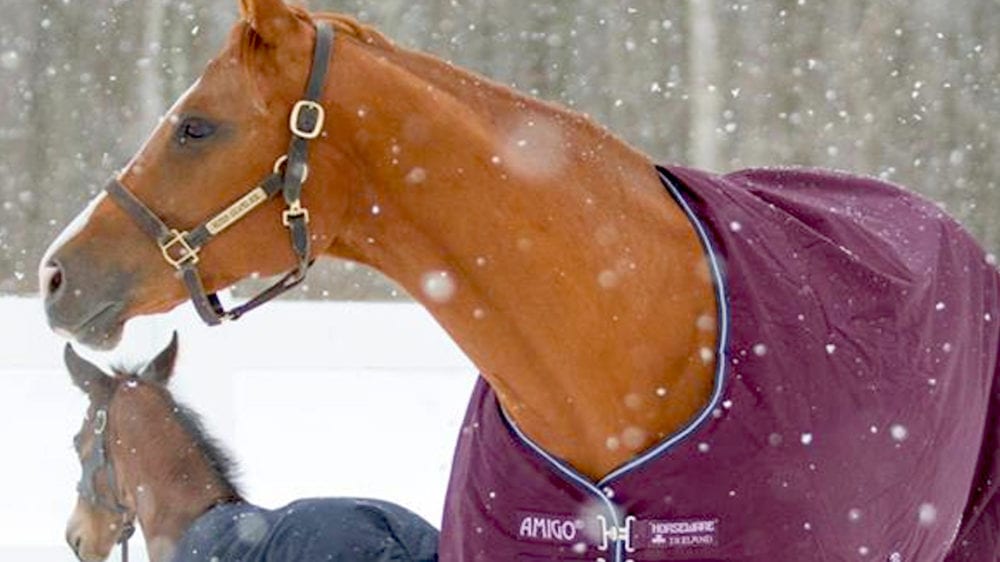It is breeding season, and for many, it is a risky and expensive business. It is a gambler’s industry as you never quite know what you are going to get. Mare owners try to limit the risks by researching the best stallion to cross their mare, but the outcome can still be uncertain.
We asked breeding managers and mare owners the number one characteristic they look for in a breeding stallion. Surprisingly, their answers varied greatly. What traits do you look for in a breeding stallion? Let us know!
 Mike Hay – I don’t think it’s possible to say one characteristic. However, without soundness and a right mental attitude, you have a non-useful animal. When you speak of characteristics, a person tends to think about their personal preferences that pertain to their event or type of horse they deal with—for instance, color, hocks, cow, how the neck comes out, etc. I am just saying that any horse that is not sound and sane has a minimal future. I feel the breeding public needs to consider the stallions that are retired sound and have long careers as having the characteristics worthy of reproduction. Other elements are more “optional” depending on certain events.
Mike Hay – I don’t think it’s possible to say one characteristic. However, without soundness and a right mental attitude, you have a non-useful animal. When you speak of characteristics, a person tends to think about their personal preferences that pertain to their event or type of horse they deal with—for instance, color, hocks, cow, how the neck comes out, etc. I am just saying that any horse that is not sound and sane has a minimal future. I feel the breeding public needs to consider the stallions that are retired sound and have long careers as having the characteristics worthy of reproduction. Other elements are more “optional” depending on certain events.
 Erin Bradshaw Weiss – Mindset. You can have the most talented horse, but if they are lousy minded….no thank you. If you visit a breeding stallion and are trying to bite you, have to be handled with a chain, and you can’t get near them, then why would you want to reproduce that? In my opinion, mindset is everything when it comes to training young horses along with the movement. I feel strongly about this after owning John Simon since he was three. There is a reason he is not retired to the stud barn and is still out there competing today, but also able to breed five months out of the year…it’s because he is exceptionally minded, and he is passing it down to his babies.
Erin Bradshaw Weiss – Mindset. You can have the most talented horse, but if they are lousy minded….no thank you. If you visit a breeding stallion and are trying to bite you, have to be handled with a chain, and you can’t get near them, then why would you want to reproduce that? In my opinion, mindset is everything when it comes to training young horses along with the movement. I feel strongly about this after owning John Simon since he was three. There is a reason he is not retired to the stud barn and is still out there competing today, but also able to breed five months out of the year…it’s because he is exceptionally minded, and he is passing it down to his babies.
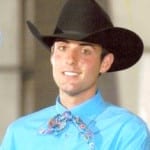 Scott Kesney – The single most important characteristic in a breeding stallion is the ability to stamp their foals. To have a stallion that passes predictable characteristics is an asset to my breeding program. It takes some of the guesswork out of the equation.
Scott Kesney – The single most important characteristic in a breeding stallion is the ability to stamp their foals. To have a stallion that passes predictable characteristics is an asset to my breeding program. It takes some of the guesswork out of the equation.
 Julie Voge – There is not one single trait. Pick the stallion that best compliments your mare. That being said, we then choose stallions that have owners and managers that promote their offspring and treat people well. It costs the same to feed and train an average foal as it does a great one. If you are going to do it, do it the best you can.
Julie Voge – There is not one single trait. Pick the stallion that best compliments your mare. That being said, we then choose stallions that have owners and managers that promote their offspring and treat people well. It costs the same to feed and train an average foal as it does a great one. If you are going to do it, do it the best you can.
 Steve Heckaman – One of my ‘must-haves’ is a strong topline because it affects motion either positively or negatively. A horse with low withers, high hip tends to be heavy on the forehand. The other is an excellent set to the hock because impulsion begins from the rear legs. A horse with a poor drive is likely to be a poor performer in any event.
Steve Heckaman – One of my ‘must-haves’ is a strong topline because it affects motion either positively or negatively. A horse with low withers, high hip tends to be heavy on the forehand. The other is an excellent set to the hock because impulsion begins from the rear legs. A horse with a poor drive is likely to be a poor performer in any event. Debbi Trubee – I believe that when you breed to a stallion, you’re going to see more characteristics from the maternal line of that stallion in his get than you are the sire line. For a stallion to truly be considered a breeding horse, they need to have a solid maternal line. If I could only pick one thing to determine what stallion I would breed to, it would be the stallion with a great dam and a family that I like. It isn’t going to guarantee a stallion will be a breeding horse, but it sure is something I look at when I’m looking at an unproven stallion.
Debbi Trubee – I believe that when you breed to a stallion, you’re going to see more characteristics from the maternal line of that stallion in his get than you are the sire line. For a stallion to truly be considered a breeding horse, they need to have a solid maternal line. If I could only pick one thing to determine what stallion I would breed to, it would be the stallion with a great dam and a family that I like. It isn’t going to guarantee a stallion will be a breeding horse, but it sure is something I look at when I’m looking at an unproven stallion.
 Breanne Porter – A stallion that is producing conformationally correct foals. I usually won’t breed to a stallion I haven’t seen in person. I like to look at their hooves and legs to make sure they are pretty correct. I am not about breeding to the “trending” stallion; I want to breed to the stallion that will highlight my mare’s best qualities and improve where she lacks – whether it is a popular stallion or not, it is more about the right result. A great moving foal is a great moving foal.
Breanne Porter – A stallion that is producing conformationally correct foals. I usually won’t breed to a stallion I haven’t seen in person. I like to look at their hooves and legs to make sure they are pretty correct. I am not about breeding to the “trending” stallion; I want to breed to the stallion that will highlight my mare’s best qualities and improve where she lacks – whether it is a popular stallion or not, it is more about the right result. A great moving foal is a great moving foal.
 Sarah Rosciti – A great mind. If you have the best-legged horse but can’t get it shown, it’s no good to anyone. It is also easier on their bodies if they take the training easy. You are more likely to have a show horse that will last.
Sarah Rosciti – A great mind. If you have the best-legged horse but can’t get it shown, it’s no good to anyone. It is also easier on their bodies if they take the training easy. You are more likely to have a show horse that will last.
 Jeff Burley – When I am picking a stallion, I do not just look at the stallion but the mare as well. I want to find a stallion that compliments my mare. A stallion that will improve the mare’s flaws. It can either be conformation or movement. I want the best match for my mare to result in the best cross, hopefully.
Jeff Burley – When I am picking a stallion, I do not just look at the stallion but the mare as well. I want to find a stallion that compliments my mare. A stallion that will improve the mare’s flaws. It can either be conformation or movement. I want the best match for my mare to result in the best cross, hopefully.
 Jan Shepherd Pittman – It would depend on the mare and discipline I am breeding for. If I had only one choice, it would be his offspring records production, but that method leaves out some nice young stallions.
Jan Shepherd Pittman – It would depend on the mare and discipline I am breeding for. If I had only one choice, it would be his offspring records production, but that method leaves out some nice young stallions.
 Jerry Erickson – To me, the disposition is probably most important. Even if the offspring is not fabulous, if it is good minded and trainable, there is a division that it can be prepared for. Along with the disposition, I would say athletic ability. These two go hand-in-hand as, once again, if the resulting foal does not fit the event that it was bred to do, it can still fit in a different event because of the trainable athletic ability.
Jerry Erickson – To me, the disposition is probably most important. Even if the offspring is not fabulous, if it is good minded and trainable, there is a division that it can be prepared for. Along with the disposition, I would say athletic ability. These two go hand-in-hand as, once again, if the resulting foal does not fit the event that it was bred to do, it can still fit in a different event because of the trainable athletic ability.
 Stephanie Moore – A stallion should only be left a stallion if he is better than his sire. By that, I do not mean he just accumulated a more significant show record. I mean, his conformation and movement are stronger because his sire is consistently weak while also retaining his sire’s positives. As breeders striving for the ideal show horse, we should be improving with each generation. We can not do that if we continue to perpetuate the same faults over and over again.
Stephanie Moore – A stallion should only be left a stallion if he is better than his sire. By that, I do not mean he just accumulated a more significant show record. I mean, his conformation and movement are stronger because his sire is consistently weak while also retaining his sire’s positives. As breeders striving for the ideal show horse, we should be improving with each generation. We can not do that if we continue to perpetuate the same faults over and over again.
 Joan Schroeder – It takes more than one–a great mama with a great sire is my primary influence…this means the parents’ genetics/bloodlines are essential in increasing the percentages of a sire’s quality its offspring. Then there is soundness, conformation, good looks, personality, and intelligence.
Joan Schroeder – It takes more than one–a great mama with a great sire is my primary influence…this means the parents’ genetics/bloodlines are essential in increasing the percentages of a sire’s quality its offspring. Then there is soundness, conformation, good looks, personality, and intelligence.
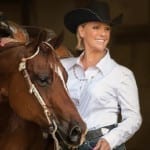 Candace Jussen – I prefer a stallion that consistently flatters the mare he is crossed with—improving conformation weaknesses, temperament, and talent. The heart or that special ingredient we all strive for is overlooked. In a rush to get a mare in foal, precisely what the stallion brings to the breeding is often unrealistic. In my opinion, having a stallion who dominates a mare’s attributes is not my favorite. That dominant DNA also contains his negative qualities. If I like a mare well enough to breed her, I want her qualities in that foal as well as the stallions.
Candace Jussen – I prefer a stallion that consistently flatters the mare he is crossed with—improving conformation weaknesses, temperament, and talent. The heart or that special ingredient we all strive for is overlooked. In a rush to get a mare in foal, precisely what the stallion brings to the breeding is often unrealistic. In my opinion, having a stallion who dominates a mare’s attributes is not my favorite. That dominant DNA also contains his negative qualities. If I like a mare well enough to breed her, I want her qualities in that foal as well as the stallions.
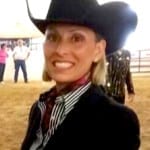 Amy Mackie Smith – If we’re picking one, it has to be conformation. A horse that is not built correctly could pass on those traits that are undesirable to their offspring. To start with flawed conformation could result in injuries and sour horses. There aren’t many horses who are far from perfect who are champions, but I think those built correctly to do their jobs have an advantage, are happier with their work, and have longevity to perform at the highest level of showing.
Amy Mackie Smith – If we’re picking one, it has to be conformation. A horse that is not built correctly could pass on those traits that are undesirable to their offspring. To start with flawed conformation could result in injuries and sour horses. There aren’t many horses who are far from perfect who are champions, but I think those built correctly to do their jobs have an advantage, are happier with their work, and have longevity to perform at the highest level of showing.
 Diane Chilton-Harper – Well, it isn’t one. I think great breeders have a program; they help you choose the mare to breed, are willing to say no to breeding their daughters to their sire, and know what will work in a pedigree with their stud. They are eager to tell the breeder what the stallion’s weakness is. For instance, Radical Rodder’s don’t usually make two-year-olds. They are late. They have an advertising program, do futurity breedings to make your horse eligible for more money, and do incentive or breeders trust. They advertise, not just the stud, but offspring owned by others. The stud owner must stand behind their stud, help with horses with problems, and be willing to help select a young horse trainer. They guide mare owners and not breeders on what a breeding cycle is like, what to expect, and the pain of foal loss and joy of the healthy baby. Breeding has massive highs and massive lows. Mare owners are our unsung heroes of the business.
Diane Chilton-Harper – Well, it isn’t one. I think great breeders have a program; they help you choose the mare to breed, are willing to say no to breeding their daughters to their sire, and know what will work in a pedigree with their stud. They are eager to tell the breeder what the stallion’s weakness is. For instance, Radical Rodder’s don’t usually make two-year-olds. They are late. They have an advertising program, do futurity breedings to make your horse eligible for more money, and do incentive or breeders trust. They advertise, not just the stud, but offspring owned by others. The stud owner must stand behind their stud, help with horses with problems, and be willing to help select a young horse trainer. They guide mare owners and not breeders on what a breeding cycle is like, what to expect, and the pain of foal loss and joy of the healthy baby. Breeding has massive highs and massive lows. Mare owners are our unsung heroes of the business.
 Dakota Diamond Griffith – In dealing with performance horses, the most critical factor in selecting a stallion is their offspring’s mindset. As a breeder, owner, trainer, there is no question that foals must possess the mindset to want to perform their job cumulatively. Colts come to me with a large cross-section of experience. Some are very imprinted, while others are very green and inexperienced. I look for a colt who wants to make progress and shows a willingness and aptitude to learn. Mindset is something that begins with making good choices in the breeding shed.
Dakota Diamond Griffith – In dealing with performance horses, the most critical factor in selecting a stallion is their offspring’s mindset. As a breeder, owner, trainer, there is no question that foals must possess the mindset to want to perform their job cumulatively. Colts come to me with a large cross-section of experience. Some are very imprinted, while others are very green and inexperienced. I look for a colt who wants to make progress and shows a willingness and aptitude to learn. Mindset is something that begins with making good choices in the breeding shed.
 Paige Quarterman – I would say consistency among his offspring, whether in looks, movement, or trainability. All things that draw you to a stallion in the first place. We breed quite a few out and consider how much of a stallion comes through in his get. As the saying goes, a stallion that “stamps” them with what we are looking for. That being said, we definitely think of our mares as more than vessels, which is also considered equally.
Paige Quarterman – I would say consistency among his offspring, whether in looks, movement, or trainability. All things that draw you to a stallion in the first place. We breed quite a few out and consider how much of a stallion comes through in his get. As the saying goes, a stallion that “stamps” them with what we are looking for. That being said, we definitely think of our mares as more than vessels, which is also considered equally.
 Cindy Stephens-McCraw – Conformation–as a stallion with good structure and built to move will produce foals that do the job naturally, thus making the training a breeze.
Cindy Stephens-McCraw – Conformation–as a stallion with good structure and built to move will produce foals that do the job naturally, thus making the training a breeze.
 Nancy Sue Ryan – Balanced conformation on straight legs.
Nancy Sue Ryan – Balanced conformation on straight legs.
 Elizabeth “Spike” Brewer – 1) Quality of movement 2) Conformation/height 3) Pedigree 4) Progeny (established studs) 5) Programs they are enrolled in.
Elizabeth “Spike” Brewer – 1) Quality of movement 2) Conformation/height 3) Pedigree 4) Progeny (established studs) 5) Programs they are enrolled in.
 Scott Trahan – Correctness, all the angles which relate to soundness are correct. It is so important since he is affecting the gene pool.
Scott Trahan – Correctness, all the angles which relate to soundness are correct. It is so important since he is affecting the gene pool.
 Kristen Galyean – Talent and mind are equally important to me.
Kristen Galyean – Talent and mind are equally important to me.
 Cleve Wells – Soundness, longevity, and desire to please.
Cleve Wells – Soundness, longevity, and desire to please.
 Kim Dean – That they pass on great minds to their offspring.
Kim Dean – That they pass on great minds to their offspring.
 Sandra Morgan – A great neck and head.
Sandra Morgan – A great neck and head.
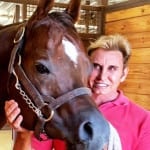 Clark Rassi – A short, strong back.
Clark Rassi – A short, strong back.
Do you agree with some of the comments above? Let us know your thoughts and what has been the best way you have matched your mare with a stallion.


